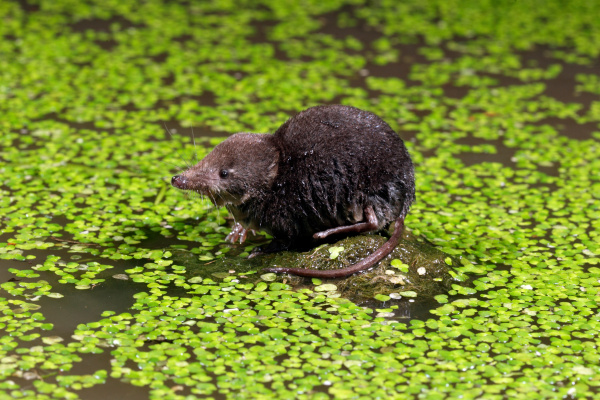Water Shrew
Neomys fodiens
<
>


 Type
Type Mammal
Mammal Status
Status Protected
Protected Decreasing in number
Decreasing in number Season
Season Spring
Spring Summer
Summer Autumn
Autumn Winter
Winter Your best bet is to spot these competent swimmers in the water.
The biggest of our shrews, this dark grey mammal is a good swimmer that's mostly found in wetland habitats, such as around canals and rivers, streams, fens, ponds and reedbeds - though they are sometimes found in grassland and woodland. They live in small burrows in the banks of their watery habitats.
The Water Shrew spends a lot of time hunting for invertebrates and will swim underwater to catch Mayfly and Caddisfly Larvae. While these mammals don't have webbed feet, stiff hairs on their tail and back feet aid swimming.
They are also quite unusual among mammals as they have a venomous bite, used to immobilise frogs and small fish up to 60 times heavier than itself.
They breed in the summer, producing three to 15 young per litter, and are never found at high densities so it's hard to tell how their populations are doing.
The only shrew that's likely to be seen in the water, the Water Shrew is around 6-9.5cm long and has a silky dark grey or black back and white underside, with large hind feet. They also have a long pointed snout, small ears and tiny eyes.


